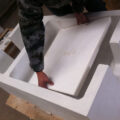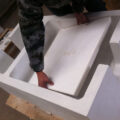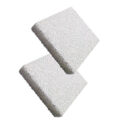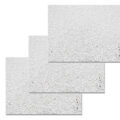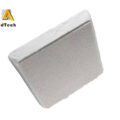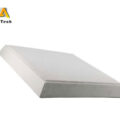Metal filtration efficiency is affected by the thickness, pore size and effective flow area of the molten metal foam filter.
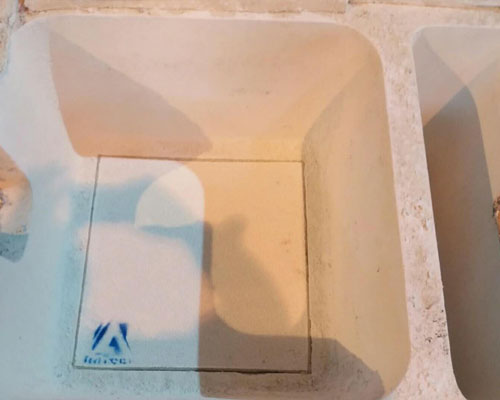
Metal Filtration Efficiency Affected by Ceramic Foam Filter
The greater the thickness of the ceramic foam filter, the better the strength of the filter, and the higher the filter efficiency of deep metal filtration, of course, the higher the use cost. Consider the most appropriate strength and filtration efficiency.
The smaller the pore size is, the better the metal filtration effect is, but the bigger the blocking layer is. Standard filter sizes are 20 PPI (10 holes per inch) (coarse), 30 PPI (15 holes per inch) (medium), and 60 PPI (25 holes per inch) (fine).
In some foundries, the cross-sectional area ratio of each part of the gate system is set to ensure proper flow. Various ceramic filter media show a certain degree of pressure drop because they greatly regulate the flow of molten aluminum. In order to reduce the influence of the filter on the aluminum water velocity, the flow area of the filter should be much larger than the flow control area of the gate system. The filter shall not be the flow control part of the gating system. Therefore, it is recommended that the filter area be at least 2 to 5 times the flow control area.
All molten metal filters have to limit metal spillage before they are completely blocked. As the inclusions are filtered out, the effective flow area of the ceramic foam filter decreases and flow blockage occurs. In extreme cases, exceeding this limit may cause the flow through the filter to stop completely. The flow rate of the ceramic filter varies greatly with the inclusion content in aluminum water, pouring temperature, and gating system design. The foundry can determine how much flow area the filter needs based on the flow value and casting weight.



